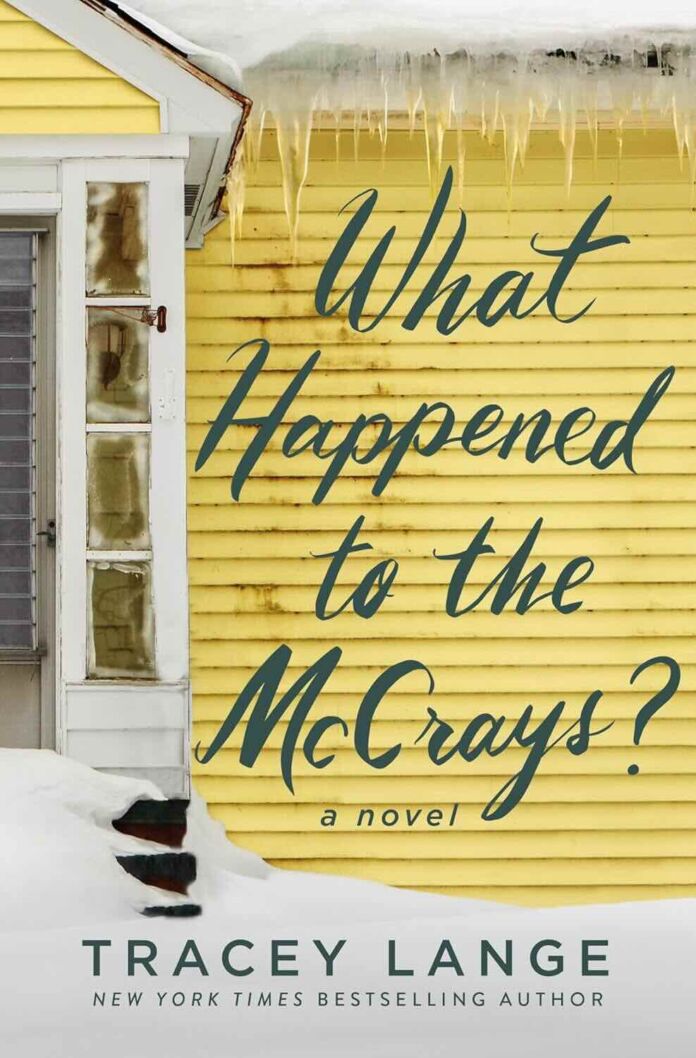In her third novel, following the success of We Are the Brennans and The Connellys of County Down, Tracey Lange delivers a powerfully moving narrative that examines the aftermath of profound loss and the possibility of reconciliation. Set in the close-knit community of Potsdam, New York, What Happened to the McCrays? weaves together past and present to tell a story of love, grief, and the courage it takes to face our deepest pain.
Narrative Structure and Storytelling
Lange employs a dual timeline structure with remarkable skill, alternating between “Now” and “Then” chapters that gradually reveal the layers of Kyle and Casey McCray’s relationship. This technique serves multiple purposes:
- Creates natural suspense and momentum
- Allows deeper understanding of character motivations
- Reveals the complexity of their shared trauma
- Builds emotional resonance through strategic revelations
The narrative flow is masterfully controlled, with each timeline informing and enriching the other. Particularly effective is how Lange delays revealing the full circumstances of Charlie’s death and Casey’s subsequent suicide attempt, allowing readers to understand the depth of the characters’ pain before confronting its source.
Character Development
The character work in this novel is exceptional, particularly in its portrayal of:
Kyle McCray
A complex protagonist whose journey from guilt-ridden escapee to potential redeemer is believably rendered. His evolution feels organic, particularly in his interactions with the middle school hockey team.
Casey McCray
Perhaps the novel’s most compelling character, Casey’s struggle with grief and self-punishment is heartbreakingly authentic. Lange doesn’t shy away from showing both her strength and her deep psychological wounds.
Supporting Characters
- Wyatt: Casey’s brother serves as both conscience and catalyst
- Danny McCray: Kyle’s father, whose stroke initiates the story’s events
- The middle school hockey team: Particularly well-drawn, providing both comic relief and emotional depth
Themes and Symbolic Elements
The novel explores several interconnected themes with nuance and depth:
- Grief and Its Aftermath
- The different ways people process loss
- The danger of letting grief become an identity
- The impact of unresolved trauma on relationships
- Community and Connection
- The role of small-town dynamics in healing
- The importance of chosen family
- The power of shared experiences
- Redemption and Second Chances
- The possibility of personal growth
- The courage required to face past mistakes
- The healing power of forgiveness
Setting and Atmosphere
Potsdam emerges as a character in its own right, with Lange capturing the essence of small-town life without resorting to cliché. The hockey rink, River Road, and the various homes and businesses create a vivid sense of place that grounds the emotional drama.
Writing Style
Lange’s prose is clean and effective, with moments of genuine beauty that never feel forced. She has a particular talent for dialogue, capturing the rhythms of both adult conversation and middle school banter with equal authenticity. The hockey scenes are especially well-rendered, conveying both the technical aspects of the game and its emotional importance to the characters.
Minor Critiques
While the novel is largely successful, there are a few areas where it could be stronger:
- Some secondary plot threads feel slightly underdeveloped
- The pacing occasionally slows in the middle sections
- A few scenes between Kyle and Casey verge on melodrama
- Some readers might find the resolution slightly too neat
Emotional Impact
The novel’s greatest strength lies in its emotional authenticity. Lange handles difficult subjects – childhood death, suicide attempts, marital breakdown – with sensitivity and insight. The gradual revelation of past events creates a powerful emotional arc that culminates in a deeply satisfying conclusion.
Literary Significance
What Happened to the McCrays? represents a significant evolution in Lange’s work. While maintaining the focus on family dynamics that characterized her previous novels, this book demonstrates greater complexity in both structure and theme.
Comparison to Similar Works
The novel bears comparison to works like:
- Ask Again, Yes by Mary Beth Keane
- The Friend by Sigrid Nunez
- An American Marriage by Tayari Jones
However, Lange’s voice and approach remain distinctly her own.
Target Audience
This book will particularly appeal to readers who enjoy:
- Character-driven contemporary fiction
- Stories about marriage and family dynamics
- Narratives dealing with grief and healing
- Small-town settings
- Sports as a metaphor for life
Final Assessment
What Happened to the McCrays? is a deeply moving exploration of how we carry and eventually learn to live with profound loss. While the subject matter is heavy, Lange maintains hope throughout, showing how love can persist even through the darkest times.
Conclusion
Tracey Lange has created a powerful narrative that reminds us that healing is possible, even from the deepest wounds. Through the story of the McCrays, she shows us that sometimes the hardest part of love is learning to forgive ourselves.
“What Happened to the McCrays?” stands as a testament to the resilience of the human heart and the possibility of redemption, even when we think we’re past the point of no return. It’s a beautiful addition to the contemporary literary fiction landscape and confirms Lange’s place as a masterful chronicler of family dynamics and human relationships.





